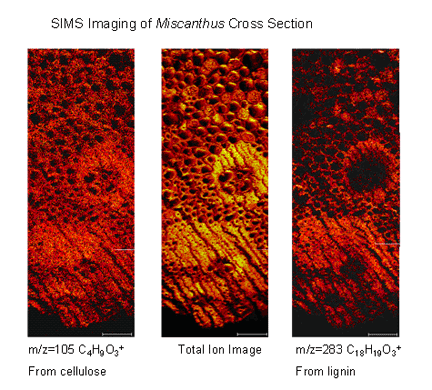| While neuronal tissue is complex, so to is plant tissue, which also has a unique set of sampling issues. In a collaborative effort with Paul Bohn's group at Notre Dame, we are studying the distribution of compounds within woody plants; specifically, lignocellulosic materials (LCMs) are the major component of dried woody plants and are promising candidates for future biofuel production. The conversion of LCMs into liquid fuel (ethanol) involves separation of cellulose/hemicellulose from lignin and enzymatic fermentation of the cellulose/hemicellulose. But the cellulose/hemicellulose forms a complicated network structure with lignin that poses many challenges to the conversion process. Mass spectrometric methods, especially secondary ion mass spectrometry and laser desorption/ionization mass spectrometry, are used to monitor the distribution of species from cellulose and lignin at different stages of this conversion process. With SIMS depth profiling, overlayers of LCM can be precisely removed to reveal fresh inner layers for further SIMS analysis, by doing so, a three-dimensional chemical map can be obtained. The ultimate goal of the research will be developing an advanced method to produce biofuel from LCMs efficiently and economically. |
 |

